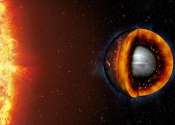Rogue's gallery of dusty star systems reveals exoplanet nurseries
Astronomers this month released the largest collection of sharp, detailed images of debris disks around young stars, showcasing the great variety of shapes and sizes of stellar systems during their prime planet-forming years. ...









